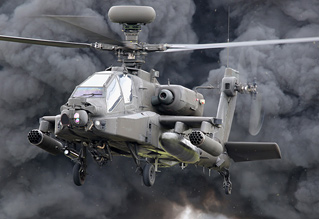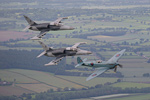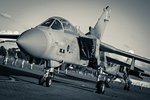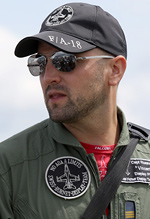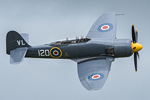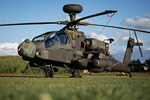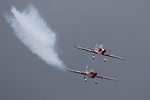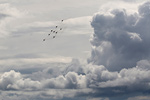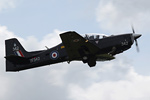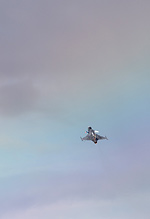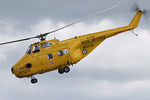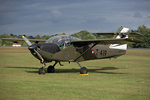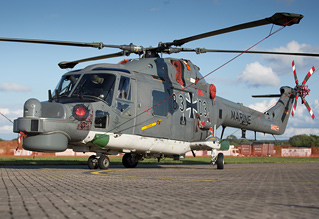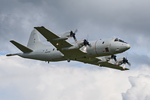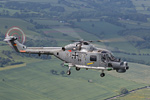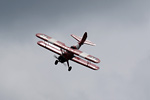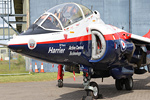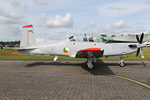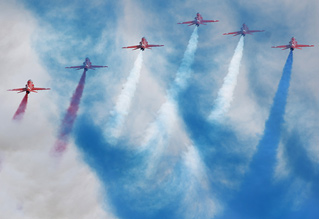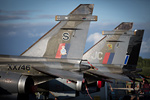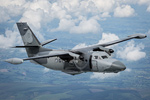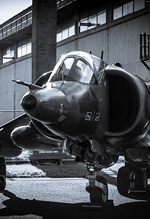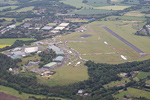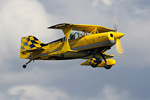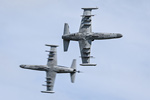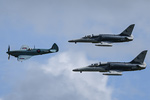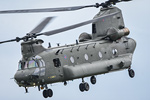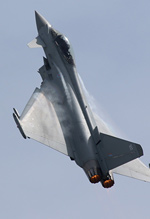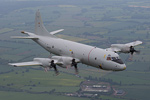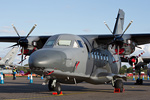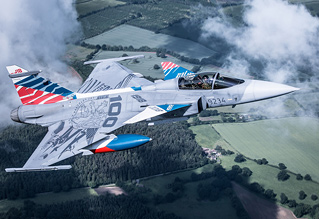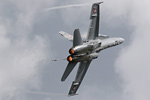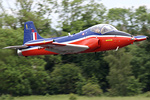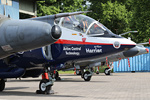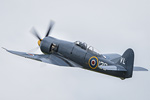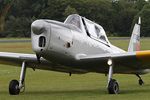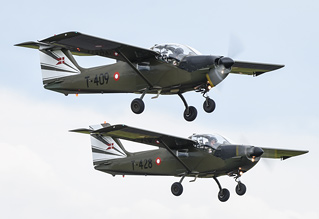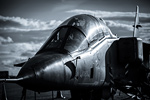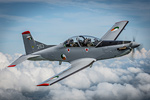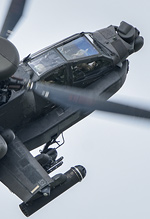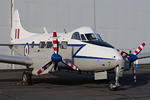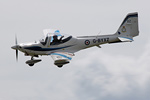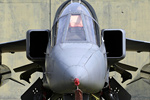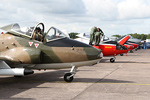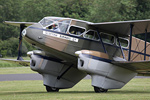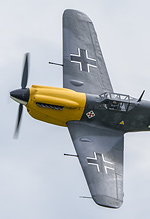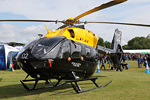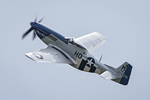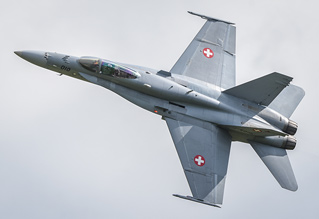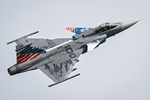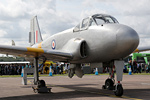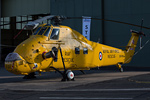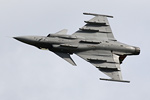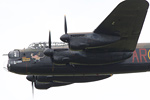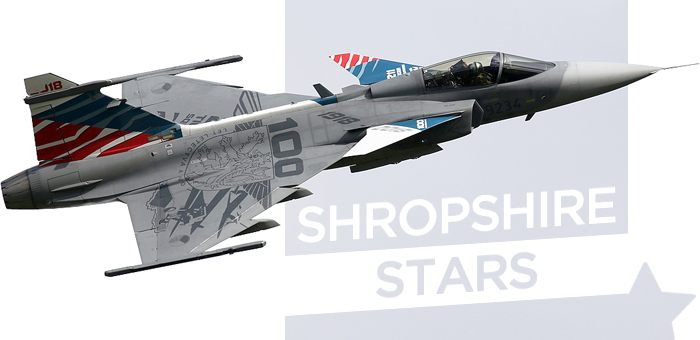
RAF Cosford Air Show
Sunday 9th June 2019
It is inevitable that the starting point for every opinion, discussion and review of the 2019 RAF Cosford Air Show will begin with last year's outstanding event as a benchmark. As a special RAF100 event it took an approach that was always intended to be a one-off. This year, the event was to revert to a format more familiar to Cosford visitors, but with strong international participation and a strong adherence to the show's themes the Air Show was still able to carry over last year's level of quality.
reports from Cosford for UKAR. Photography by the staff team.
RAF Cosford's very special celebration in 2018 had, perhaps, been the ultimate in theming; the event in its entirety both on the ground and in the air telling the story of the RAF's first century. The organising team had been clear during the build up to the 2019 event that the show would adopt a more familiar approach, presenting a variety of entertainment from civilian and military owners. And this it did. Yet there were themes woven into the show, in both the static and flying displays. Women in the Royal Air Force, 50 years since the Harrier's entry to service, 65 years of the humble Jet Provost and 70 years of NATO were all commemorated during the day, and in the event RAF Cosford delivered a truly memorable airshow, one which felt as though it continued to justify a position among the top flight of British aviation events.
An early start is required to do the showground justice. There is very much to see on the ground, and a very limited amount of time to do it, before the flying display launches later in the morning. That perennial Cosford 'wish', that the event be a two day one, holds true more than ever. The Vintage Village, where re-enactors, vintage vehicles and paraphernalia brought living history around a pair of Austers, a Tiger Moth, a Spartan Executive and the RAF Museum's Gladiator and Spitfire PRXIX, replayed a little of last year's ground exhibition and deserved more than a fleeting visit. It was a shame that the weather in the days prior to the event led to the cancellation of six further historic aircraft which had been due for display there also.
By virtue of the base being home to many ground instructional airframes, as well as the RAF Museum, the static display is furnished with rarely seen aircraft that bring a unique quality to the show. Notable were two special line ups. The first, from Piston Provost to Strikemaster, celebrated 65 years of the Jet Provost line. The RAF Museum's Percival Provost T1 sat at one end and alongside their Jet Provost T1, with one of NWMAS Strikemaster Mk82's at the other, a Jet Provost T3 and two T5s making up the line. It was admirable to acknowledge such a staple of British aviation in this way.
Nearby a line up of Harriers was a treat for fans of the 'Jump Jet', consisting of two Harrier GR3s, one each from the RAF Museum and from the station's own collection, the unique VAAC Harrier T4, RNAS Culdrose's Sea Harrier F/A 2 and the ultimate Harrier, the Harrier GR9 of the RAF Museum completing what must surely be a 'last chance' opportunity to see so many different flavours of the iconic Harrier in a row, especially given that the VAAC Harrier is to move on shortly with its new owners Jet Art.
Jaguars seemed to litter the airfield, as they often do at Cosford, and together with Tornados of both GR4 and F3 marks these instructional airframes provided a boost in numbers and interest to the RAF's static display presence, which otherwise consisted of an example of most of their training types. Together with a busy RAF village, and many ground exhibitions covering a multitude of aspects of the RAF mission and indeed culture, a visitor was left in no doubt that they were attending an RAF event. On the ground at least, engagement with the audience was highly successful.
Looking beyond the hustle and bustle of the showground to the flying display, the RAF did rather give the impression of paying lip service to their own showcase event. A trio of Birmingham University Air Squadron Tutors augmented the full set of this season's regular display assets. A Shorts Tucano was a pleasure to see, returning to the circuit for its swansong this year. Crisp, entertaining aerobatics by Flt Lt Liam Matthews stirred memories of Wright Jubilee Trophy winners of the past. The Tutor was displayed as well as it ever has been, Typhoon brought commotion and spectacle in the way that only fast jets can, the Chinook was as imposing as ever in HC6 form, and the Red Arrows were the stars of the show for many a family in the crowd. Yet, there were no 'extras', nothing 'above and beyond' for the RAF's own show. No fleeting appearance by a transport aircraft or an F-35, no role demo. The economy-sized RAF Falcons Parachute Display Team maybe best sums up the RAF's apparent attitude to flying display participation; there were seven jumpers, where not so long ago there had been a dozen.
Overseas military participation, however, was mightily impressive, and demonstrates perhaps best of all how this event has been elevated over recent seasons. This supported the NATO 70th anniversary theme within it, as well as an historic connection between RAF Cosford and the Czech and Slovak Air Forces that dates back to World War 2. On static display a Pilatus PC-9M from Ireland, a TBM700 from the French Air Force and a Westland Sea Lynx from the German Navy sat alongside a Fleet Air Arm Merlin. In the flying display the Belgian Air Component brought their snappily presented Agusta A-109, and Denmark, their display team of five Saab T-17s, Baby Blue. Rarely seen in the UK, a combination of the unusual shape in the sky of the T-17 and the charm of their display routine won many fans in an appreciative audience. The Swiss Air Force returned their F/A-18C Hornet to the show, with a searing display of noise and manoeuvrability, with the Czech Air Force's tiger-schemed Saab Gripen also performing a high quality solo jet display.
If the Danish Baby Blue team was a rare sight in the UK, the P-3C Orion that the German Navy brought to Shropshire was extraordinary. The display itself was a graceful sequence of passes in various configurations, but it was enhanced by the most dramatic of back drops as spectacular cloud formations provided the airshow with a breathtaking setting. A unique sight indeed.
Further drama came from those acts that brought pyrotechnics to the show. Completing the overseas contingent a pair of Czech Aero L-159 ALCAs proved that it isn't the aircraft type that makes an airshow, rather its how its flown. They entered the arena led by ARC's Spitfire PRXI, once flown by ATA veteran Lettice Curtis, and commemorating both the Czech and Slovak forces and the contribution of women in aviation. The ALCAs went on to fly a combination of classic pairs manoeuvres, and more pyrotechnics all combined to present an exceptional air display that quite rightly went down a storm with the audience. Similarly, the Army's Apache helicopter display was full of impact, its bangs and flames adding so much more to the show than a helicopter can manage on its own.
Pyros also featured in a set piece dog fight between an airfield-raiding Buchon and defending Hurricane I. The sequence was due to begin with a Fairchild Argus, representing an ATA ferry flight, falling victim to the Buchon. Instead, it fell victim to unserviceability. Nevertheless the duo was flown gracefully by Dave Puleston and Frank Chapman respectively, and the warbirds were impressive as a pair. The Buchon's attendance was not published pre-event, adding to the drama of the WWII scenario, and an element of surprise for the audience as it ran in to deliver its attack.
Once again commemorating Women in Aviation, a Dragon Rapide represented the ATA and a rarely seen Stearman was flown by Sue Girdler. True to their principle of presenting variety within the show, there were other items featured. The Battle of Britain Memorial Flight brought the Lancaster and two Spitfires, although the Lancaster's appearance was brief. A debut for a new Chipmunk pair, the vintage Westland Whirlwind, Robert Tyrell's P-51D Mustang Miss Helen, Navy Wings' Sea Fury T20, a pairs display of aerobatics from Global Stars' Tom Cassells and Chris Burkett, and debut appearances of solo aerobatic displays by Phil Burgess in the diminutive DR107 and Adrian Plant in a Pitts S-1 all featured. But it was another commemorative flying display set piece that stood out among the historic participants: a beautifully presented trio of Red Pelicans liveried Jet Provost T3 together with Jet Provost T5 and Strikemaster that marked the JP's 65th Anniversary just as well as the line up on the ground did.
There was much to live up to, but the event most certainly did deliver. The RAF Cosford Airshow has come a long way in the last few years. It seems that with some recent editions of the show the organisers have had some rotten luck. Either with weather, or participants - sometimes star items - cancelling. This year everything seemed to work out just as its supposed to, and for the second year running, the airshow was an excellent one.
RAF Cosford is an intimate setting and aircraft operating from a flight line on the grass in front of the audience always meant the show delivered more than the sum of its parts. Yet the recent past has seen this airshow step up to a different league, while still retaining the unique charm it always had. Participation from overseas is now part and parcel of this event, all the more notable for the rarity of some of those participants on the airshow scene in general. Where else will you see a German Navy Orion flying display this year?
The organisers have worked hard to build on the legacy of the RAF100 event, and really are to be commended for doing that so well. RAF Cosford Airshow comes highly recommended.

